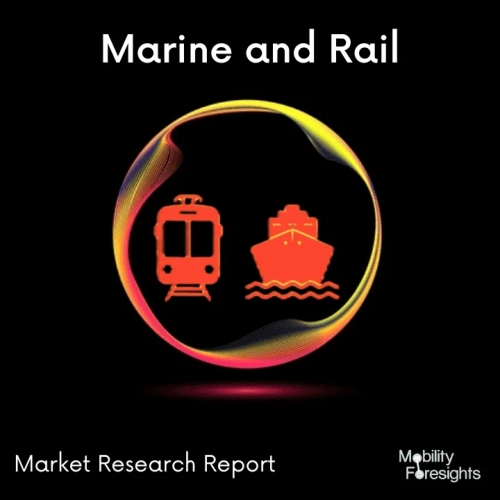Indonesia Bunker Fuel Market
Introduction
The Indonesia Bunker Fuel Market focuses on the production, distribution, and consumption of fuel used to power ships and marine vessels. Bunker fuel, also known as marine fuel, is essential for global trade and shipping operations, playing a critical role in the maritime industry. The market is categorized by fuel types, applications, and end-user segments such as cargo shipping, passenger vessels, and military ships.
Key types of bunker fuel include:
- High-Sulfur Fuel Oil (HSFO): Traditional marine fuel with high sulfur content, now regulated in many regions due to environmental concerns.
- Low-Sulfur Fuel Oil (LSFO): Complies with International Maritime Organization (IMO) regulations, offering reduced sulfur emissions.
- Marine Diesel Oil (MDO): A lighter distillate fuel used in smaller vessels and auxiliary engines.
- Liquefied Natural Gas (LNG): A cleaner alternative gaining popularity for its lower emissions and compliance with environmental standards.
- Biofuels and Synthetic Fuels: Emerging as sustainable options for reducing the carbon footprint of maritime operations.
The Indonesia bunker fuel market is expanding due to increasing global trade, evolving environmental regulations, and advancements in alternative fuel technologies.
Growth Drivers For Indonesia Bunker Fuel Market
Several factors are driving the growth of the bunker fuel market in Indonesia:
- Rising Global Maritime Trade: Expanding international trade and shipping activities are fueling demand for bunker fuel in Indonesia.
- Shift Toward Cleaner Fuels: Stringent IMO regulations, such as the IMO 2020 sulfur cap, are driving the transition to low-sulfur and alternative fuels in Indonesia.
- Growth of LNG-Powered Ships: Increasing adoption of LNG as a marine fuel is driving infrastructure development and fueling demand in Indonesia.
- Expansion of Port Infrastructure: Development of bunkering facilities at major ports to support efficient fuel supply is contributing to market growth in Indonesia.
- Advancements in Fuel Technologies: Innovations in biofuels, synthetic fuels, and fuel additives are enhancing fuel efficiency and compliance in Indonesia.
Indonesia Bunker Fuel Market Trends
Emerging trends are shaping the bunker fuel market in Indonesia, driven by technological advancements and evolving industry demands:
- Adoption of LNG as a Transition Fuel: LNG is gaining traction as a bridge fuel for reducing greenhouse gas (GHG) emissions in the maritime sector in Indonesia.
- Focus on Biofuels and Synthetic Fuels: Increasing research and development in alternative fuels to meet decarbonization targets is gaining momentum in Indonesia.
- Digitalization in Bunkering Operations: Integration of digital technologies for fuel management, monitoring, and supply chain optimization is becoming prevalent in Indonesia.
- Expansion of Scrubber-Equipped Ships: Retrofitting ships with exhaust gas cleaning systems (scrubbers) to use HSFO while meeting emission standards is growing in Indonesia.
- Regional Growth in Emerging Markets: Increasing maritime activities and port developments in developing regions are driving bunker fuel demand in Indonesia.
Challenges In The Indonesia Bunker Fuel Market
Despite its potential, the bunker fuel market in Indonesia faces several challenges:
- Environmental Regulations: Compliance with stringent emissions standards and decarbonization goals presents significant challenges for the industry in Indonesia.
- Fluctuating Fuel Prices: Volatility in crude oil prices impacts bunker fuel costs and profitability in Indonesia.
- Infrastructure Limitations: Insufficient LNG and alternative fuel bunkering infrastructure may restrict market growth in certain regions of Indonesia.
- Competition from Alternative Transport Modes: Growth in intermodal and air freight options may impact demand for marine shipping and bunker fuel in Indonesia.
- Economic Uncertainty: Global economic slowdowns and trade disruptions can adversely affect maritime fuel demand in Indonesia.
Indonesia Bunker Fuel Market Segments And Applications
The bunker fuel market in Indonesia caters to diverse vessel types and operational requirements:
- Cargo Shipping: Bulk carriers, container ships, and tankers represent the largest consumers of bunker fuel in Indonesia.
- Passenger Vessels: Cruise ships and ferries rely on cleaner and efficient fuels to meet emission standards and enhance customer experience in Indonesia.
- Military and Defense Ships: Navy and coast guard vessels require high-performance fuels for operational readiness in Indonesia.
- Offshore Support Vessels: Fuel is essential for platforms, rigs, and supply vessels in the oil and gas sector in Indonesia.
- Fishing and Small Commercial Vessels: These vessels primarily use distillate fuels like MDO and MGO in Indonesia.
- Port and Terminal Operations: Tugboats, barges, and other auxiliary vessels require bunker fuel for efficient port activities in Indonesia.
Indonesia Bunker Fuel Market Size And Forecast
The Indonesia Bunker Fuel Market is projected to reach $XX billion by 2030, growing at a XX% CAGR. Growth is driven by increasing global trade, regulatory shifts toward low-sulfur and alternative fuels, and expanding port infrastructure in Indonesia.
- Low-Sulfur Fuel Oil (LSFO): Expected to dominate the market due to compliance with IMO regulations and wide acceptance across vessel types in Indonesia.
- Liquefied Natural Gas (LNG): Anticipated to grow significantly as cleaner fuel solutions gain momentum in Indonesia.
- High-Sulfur Fuel Oil (HSFO): Projected to witness steady demand, supported by scrubber-equipped ships in Indonesia.
- Biofuels and Synthetic Fuels: Rising focus on decarbonization will drive innovation and market expansion in Indonesia.
- Infrastructure Development: Investments in alternative fuel bunkering facilities will contribute to steady market growth in Indonesia.
Other Regional Related Reports:

